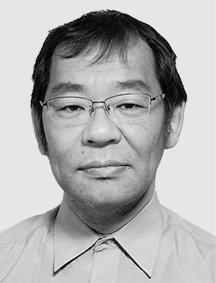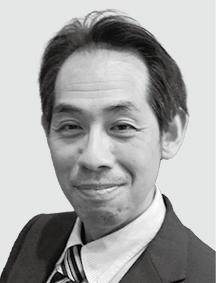Along with the reliable and economic supply of electric power, another important consideration for power transmission and distribution business operators is that they contribute to sustainable regional development. Hitachi has been consolidating the work it has done investigating potential future digital solutions for power distribution that will enhance both economic value for power transmission and distribution business operators and social value for communities. The goal is to build solutions that improve both economic and social value by combining digital twins of power distribution with cross-industry applications. This includes applications that deliver social value by optimizing practices at a regional level through integration of the information and systems belonging to real estate developers, transportation operators, public agencies, and other local stakeholders, with the digital twins serving as tools for the centralized management of a wide range of information relating to power distribution.






In Japan, electric power is mainly generated at power plants by generation operators and delivered to the consumers who need it by power transmission and distribution business operators (general power transmission and distribution business operators, power transmission business operators, and specified power transmission and distribution business operators) using transmission lines, substations, and other distribution infrastructure. While the reliable delivery of electric power is the top priority for these companies, they also need to consider commercial viability if they are to remain in operation.
Furthermore, most power transmission and distribution business operators have close ties to their region and are committed to resolving societal challenges and supporting the ongoing development of their local communities. Along with economic value for themselves, this means that enhancing social value for the entire community and region is another important consideration.
Given this environment, Hitachi has been considering the way forward for digital solutions for power distribution that can enhance social value in their regions as well as economic value for power transmission and distribution business operators and the companies from the local community that are likely to play an essential role in the future.
Figure 1 — Block Diagram of Digital Maintenance Platform Service for Power Distribution The service smooths and simplifies the integration of EAM with a wide range of systems, such as those for AI, IoT sensors, and robots. It does this by creating digital twins of power distribution that provide centralized management of a wide range of information relating to power distribution, thereby replicating the actual environment for power distribution infrastructure in a digital space.
The service smooths and simplifies the integration of EAM with a wide range of systems, such as those for AI, IoT sensors, and robots. It does this by creating digital twins of power distribution that provide centralized management of a wide range of information relating to power distribution, thereby replicating the actual environment for power distribution infrastructure in a digital space.
As noted above, the reliable delivery of electric power is the top priority for power transmission and distribution business operators. As standalone businesses, it is also important for these companies to reduce their operating and maintenance costs without compromising security of supply. In recent years, they have also had to deal with the emerging challenges of workforce shortages and aging equipment. To address these challenges, these companies have sought to enhance their own economic value by pursuing business process re-engineering (BPR), upgrading their information systems in tandem with a redesign of their workflows and organizational restructuring. They are also adopting more advanced systems, including efficiency gains from artificial intelligence (AI) and the use of drones to automate visual inspection work. To do so, they need to be integrating the enterprise asset management (EAM) systems they use for maintaining transmission and distribution infrastructure with newly installed AI platforms and other systems for Internet-of-Things (IoT) sensors, robots, and three-dimensional city models. Given that advanced systems like these are progressing at a rapid pace, the development of functions for EAM integration also needs to be made easier.
In response, Hitachi is building digital twins of power distribution for the centralized management of a wide variety of information on electricity distribution. These replicate real-world distribution systems in a digital space, including historic data. The shared use of these digital twins by other systems smooths and simplifies the integration of EAM with other advanced systems.
Meanwhile, along with raising their own economic value, enhancing social value for the entire community and region is another important consideration for power transmission and distribution business operators. As reported elsewhere(1), an essential requirement for creating sustainable societies is to achieve the best outcome for everyone by also coordinating operation with the information and systems belonging to real estate developers, transportation operators, public agencies, and other stakeholders in the local community.
To do so, Hitachi has developed a suite of cross-industry applications for resolving the sort of societal challenges that are difficult for individual organizations to address on their own, and which work by linking the digital twins of power transmission and distribution business operators with the operational systems of other stakeholders such as real estate developers and transportation operators. These link the information handled by digital twins with the operational systems belonging to the many different organizations involved in running a city, such as those for commercial districts or mobility. The resulting social value includes the optimization and reallocation of resources across entire communities.
Finally, Hitachi is contributing to enhancing economic value for power transmission and distribution business operators and social value for local communities by providing a digital maintenance platform service for power distribution in the form of a total solution that combines EAM with the digital twin of power distribution, advanced systems, and cross-industry applications (see Figure 1).
The following sections describe the digital twin of power distribution and the cross-industry applications that are key components of the digital maintenance platform service for power distribution.
In the digital maintenance platform service for power distribution, the digital twin of power distribution handles three-dimensional data on distribution infrastructure and on buildings and other urban facilities (see Figure 2). The procedure for doing so is as follows.
While step 3 provides as-is model data with the highest LoD, more cost and effort are involved in its acquisition and administration. For this reason, a more pragmatic approach is to only progress along as many steps as is warranted given the importance of the equipment concerned.
Interlinking the digital twin of power distribution with EAM gives access to EAM functions such as risk analysis and the tracking of equipment maintenance costs. This integration means that the digital maintenance platform service for power distribution can manage information as a five-dimensional model, with the three-dimensional spatial information being augmented by a time dimension (the condition of the equipment when first built, as it is now, and how it is likely to be in the future) and a cost dimension (capital and subsequent maintenance costs). Hitachi has built up expertise in the fields of power plants and transmission and distribution infrastructure over many years, including in three-dimensional spatial design and four-dimensional simulations of engineering work. By using this expertise as a basis for building five-dimensional digital twins of power distribution, Hitachi can deliver economic value to power transmission and distribution business operators in ways that include cost savings from the resolution of operational issues and the development of optimal investment plans.
Figure 3 shows how a digital twin can also be used to reform power distribution workflows. The digital twin can be used to conduct a variety of risk assessments based on multiple data sources (not just point clouds), such as the risk of economic losses, power outages, or asset damage. This enables work on the distribution system to proceed in a waste-free manner, with comprehensive and data-driven decision-making on the assessed risks and costs.
Figure 2 — Example Digital Twin of Power Distribution The data on power distribution infrastructure handled by EAM is replicated in digital space as a simple building information modeling (BIM) model. Accurate positional information is then obtained by superimposing point cloud data collected onsite and this is used as feedback to digital space.
The data on power distribution infrastructure handled by EAM is replicated in digital space as a simple building information modeling (BIM) model. Accurate positional information is then obtained by superimposing point cloud data collected onsite and this is used as feedback to digital space.
Figure 3 — New Electricity Distribution Workflow Using Digital Twin of Power Distribution Precise and low-cost forms of input data such as point clouds are used and this is then utilized to achieve waste-free electricity distribution through comprehensive and data-driven decision-making on costs and risks that is based on social, power flow, and asset considerations.
Precise and low-cost forms of input data such as point clouds are used and this is then utilized to achieve waste-free electricity distribution through comprehensive and data-driven decision-making on costs and risks that is based on social, power flow, and asset considerations.
Figure 4 — Building Performance Indicator Prediction Service as Example of Cross-industry Application This service provides real estate developers with an efficient means of predicting performance indicators for new builds that they can use during the early stages of the core building design.
This service provides real estate developers with an efficient means of predicting performance indicators for new builds that they can use during the early stages of the core building design.
The digital twins of power distribution described above are a core element in the digital maintenance platform service for power distribution, which is primarily intended as a solution for improving economic value for power transmission and distribution business operators. This section describes cross-industry applications that link these digital twins to the operational systems of other stakeholders such as real estate developers or transportation operators and provide a suite of functions for resolving the sort of societal challenges that these stakeholders find difficult to address on their own. Specifically, it will describe one such application for working with real estate developers.
Factors that today’s real estate developers need to consider include how to reduce their load on the environment and how to deal with a shift in working practices toward a mix of office work and telework. Hitachi has consulted with such developers to identify the issues that arise in development projects, whether for individual buildings or larger sites. After looking at solution ideas for using its digital twins to address these challenges, Hitachi developed its building performance indicator prediction service (see Figure 4). The service provides real estate developers with an efficient means of predicting performance indicators for new builds that they can use during the early stages of the core building design.
One of the issues for real estate developers is that they face high coordination costs due to the many different consultants they need to engage during the early stages of the core design for building development, making it difficult for them to assess performance indicators in terms of a complex mix of different factors. As this issue is one that also involves other stakeholders, including power transmission and distribution business operators, local government, and the community, it is not easy for developers to address on their own.
In response, the service can estimate performance indicator values for a building from the early stages of its core design when the architectural drawings and BIM are completed. It works by using performance indicators for existing buildings with similar design parameters as a benchmark, adjusting these to allow for the features of the planned site. These design parameters are variables determined during the core planning and design phase, including building height, total floor area, construction area, number of floors, number of tenants, number of air conditioning systems, total window area, number of floors of each type (such as retail, residential, office, or logistics), and the type of building energy management system (BEMS) to be used. The design parameters give an indication of the neighborhood traffic volume, power consumption, and how the building will look once it enters use, allowing the development plans to be reviewed on the basis of a complex mix of factors. It is anticipated that this service will reduce the cost to real estate developers of coordination with other stakeholders and of having to make major revisions after the plans are completed. They also allow for a quantitative assessment of the development plans based on a complex mix of factors. Identifying appropriate benchmark buildings and passing on this information to the architects also allows them to settle on a direction for their development plans quickly and efficiently. As the costs associated with electricity supply infrastructure in the vicinity of the building also form part of these coordination costs, the service should also help power transmission and distribution business operators cut the expense of costing this work.
By making a number of cross-industry applications like this available, Hitachi is supporting society-wide optimization by encouraging collaboration between power transmission and distribution business operators and local community stakeholders.
This article has reviewed the outlook for digital solutions for power distribution that are likely to be an essential requirement for the power distribution industry in Japan as it experiences change in both its business environment and societal role.
By using this newly designed digital maintenance platform service for power distribution as a basis for co-creation, not only with power transmission and distribution business operators, but also local community stakeholders such as real estate developers, transportation operators, and public agencies, Hitachi will continue to create digital solutions that enhance economic value for individual stakeholders while at the same time resolving societal challenges.
Considerable assistance was received from Satoshi Imaruoka of Nihon Computer Consultant Co., Ltd. and everyone else involved in the development of the digital twin of power distribution described in this article. The authors would like to take this opportunity to express their deep gratitude.